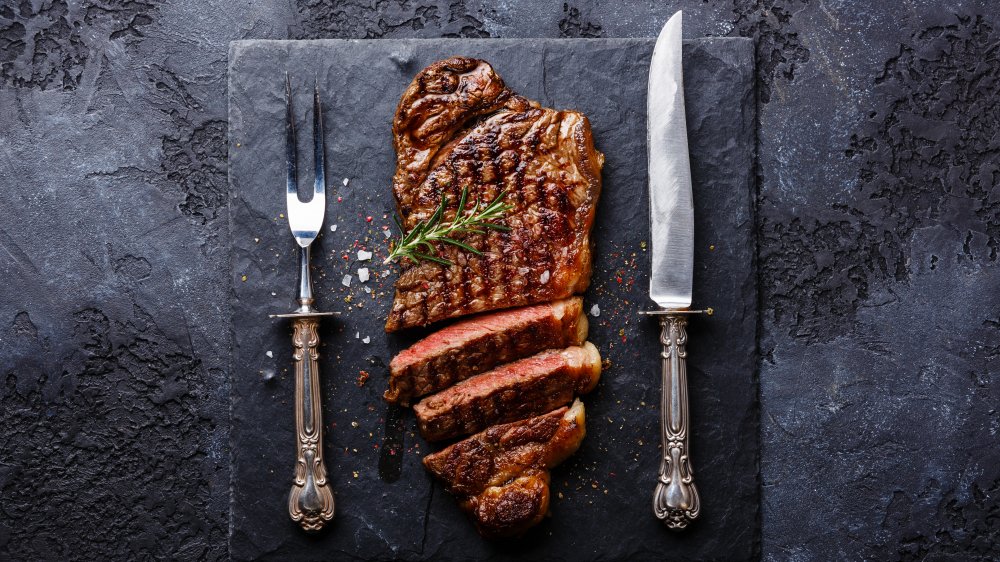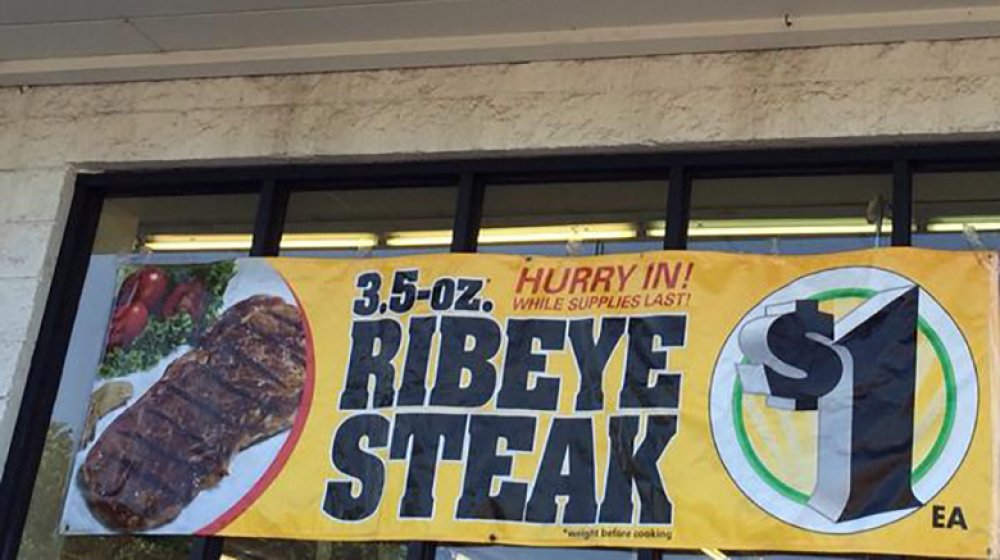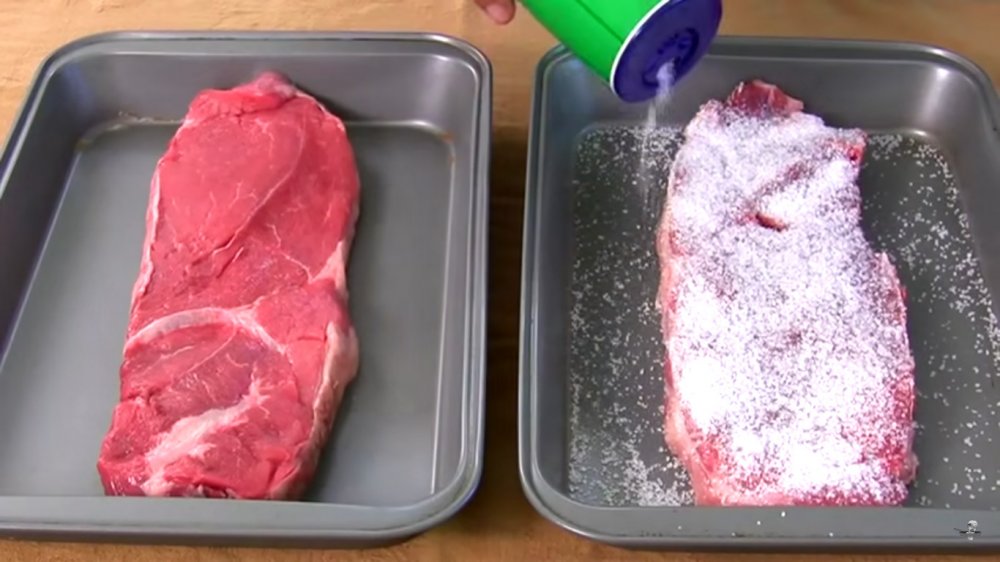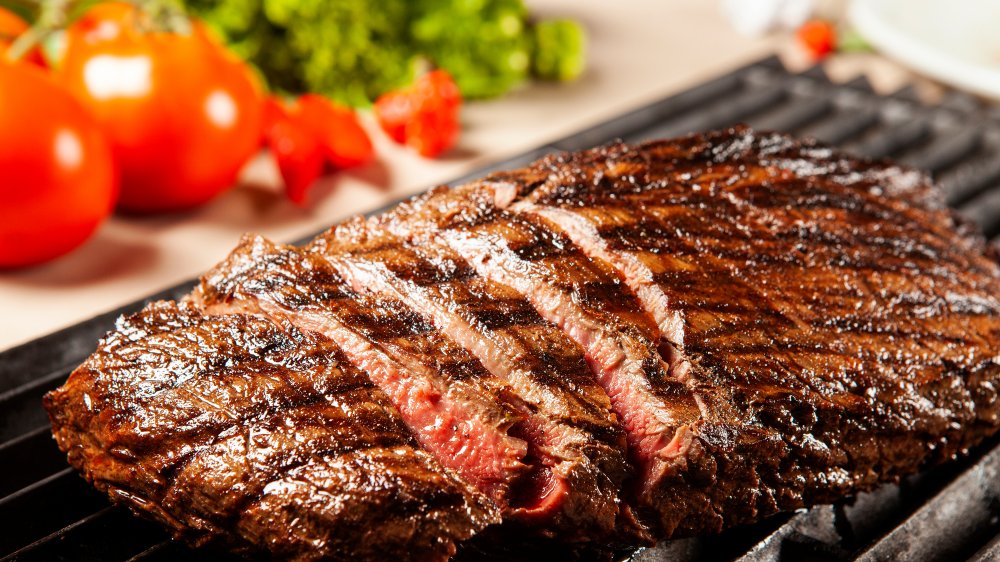How To Make Cheap Steaks Taste Expensive
A really good steak doesn't come cheap, but can a really cheap steak be made to taste not just edible, but actually really good? It's something that has surely perplexed many a bargain shopper, but it's not entirely impossible. While just about every beef fan loves visiting a high-class steak house, doing so can easily burn a hole in your wallet and most of us probably aren't hitting up Ruth Chris Steak House on a weekly basis.
To the tune of saving money (without sacrificing taste), let's break down how you can take a bargain steak and turn it into something that will wow taste buds and have your dinner companion complimenting the "pricey" cut of beef on their plate.
The challenge of the $1 steak
Finding a cheap cut of beef shouldn't be difficult. Your local grocery store will probably have some less-than-popular cuts of beef that they want to get rid of and have priced low. You can also opt for picking up a dollar store steak. You're certainly not going to get a good cut of beef for a buck, as these are typically known as "utility cuts," which represent the part of the cow that might be sold to an institutional kitchen (via The Denver Channel).
The problem with these cheap cuts of beef is that they're going to be incredibly tough because they come from the part of the cow where the muscles get a lot of action. The meat might have a good flavor, but it's probably going to be very sinewy (via Taste). A Denver news station put them to the test, and their taste-testers easily confirmed the quality of dollar store steaks. "It's definitely very rubbery," Denver firefighter Todd Kleier said. "The flavor is OK, but it's chewy." Decent flavor, but tough as an old tire.
So what's the best way to go about loosening up those cheapo steaks and making them tender and delicious?
Tenderize, tenderize, tenderize
The real key to breaking down those tough muscles in your cheap steak is going to start before you ever put it on the grill with the tenderizing process. The best way to do this is with good ol' salt — preferably sea salt or kosher salt. Place your steak in a pan and go to town salting that puppy down. Heavily. YouTube cook Jack Scalfani lays on a heavy blanket of the salt and advises to use sea salt or kosher salt, because table salt is simply too fine and will dissolve too quickly into the meat.
People have been using salt to tenderize and cure meat for thousands of years. Salt works on your steak because it helps draw out the meat's natural juices and forms a brine that is gradually reabsorbed (via Cook's Illustrated).
The thickness of your cheap cut of beef — and it'll probably be pretty thin if it only cost a buck — will determine how long you want to allow the salt to tenderize it. "The rule is this," Scalfani explains. "Every inch is an hour you leave the salt on. If it's half an inch, then you do half an hour."
When the time is up, you're going to want to rinse all the salt off of your steak in the kitchen sink. You should notice that it's now visibly darker, and hopefully, it will even feel a little more tender.
Time to season and cook that cheap steak
After you've rinsed the salt off your steak, you'll need to dry it off with a paper towel. You don't want to cook it wet or you'll just be steaming the meat, and nobody wants a steak that tastes like it was cooked in a sauna. Scalfani says that now is the time to season your steak. A signature rub, maybe a little salt and pepper — whatever. After that, it's time to grill it.
Slow and steady is going to be the rule here, because if you cook it too fast at a high temp, it's just going to overcook quickly. By cooking your steak slower and at a lower temp, you'll break down the tissues more and cancel out that rubbery factor (via Eating Well). For some extra flavor, give it a quick dunk in your favorite marinade before tossing it back on the grill for a hot minute.
"The meat will carry with it liquid, which will flare on the grill and give you more of that carbon you want and simultaneously impart flavor from the marinade," chef Joe Frietze told Food & Wine. Your sad, cheap steak should now taste not just good, but like something that cost considerably more than the couple bucks you shelled out for it.



